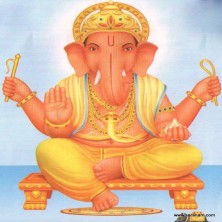Tamil New Year
Venue : Chennai
Date : April 14, 2017

Puthandu, or the better known Tamil New Year or Chithirai Tiru-naal, is the celebration of the first day of the Tamil new year in mid-April by Tamils in Tamil Nadu and Pondicherry in India, Sri Lanka and by the Tamil population in Malaysia, Singapore, Reunion Island and Mauritius.This is supposedly the day when Lord Brahma (The Creator of the world, according to Hindu mythology) started creation.The Tamil New Year follows the Nirayanam vernal equinox and generally falls either on 13 or 14 April of the Gregorian year. 13 or 14 April marks the first day of the traditional Tamil calendar and is a public holiday in both Tamil Nadu and Sri Lanka.
Tropical vernal equinox fall around 22 March, and adding 23 degrees of trepidation or oscillation to it, we get the Hindu sidereal or Nirayana Mesha Sankranti (Sun's transition into Nirayana Aries).Hence, the Tamil calendar begins on the same date observed by most traditional calendars in India as in Assam, Bengal, Kerala, Manipur, Mithila, Orissa, Punjab, Tripura etc. not to mention Nepal, Bangladesh, Burma, Cambodia, Laos, Sri Lanka and Thailand. The 60-year cycle is ancient and is observed by most traditional calendars of India and China, and is related to 5 revolutions of Jupiter, or to 60-year orbit of Nakshatras (stars) as described in the Surya Siddhanta.The traditional Tamil year starts on 13 April 2012, Kaliyuga 5114. Vikrama and Shalivahana Saka eras are also used.
There are several references in early Tamil literature to the April new year. Nakkirar, the author of the Nedunalvaadai writes in the 3rd century that the Sun travels from Mesha/Chitterai through 11 successive Raasis or signs of the zodiac. Kūdalūr Kizhaar in the 3rd century refers to Mesha Raasi/Chitterai as the commencement of the year in the Puranaanooru. The Tolkaapiyam is the oldest surviving Tamil grammar that divides the year into six seasons where Chitterai marks the start of the Ilavenil season or summer. The 8th century Silappadikaaram mentions the 12 Raasis or zodiac signs starting with Mesha/Chitterai. The Manimekalai alludes to the Hindu solar calendar as we know it today. Adiyarkunalaar, an early medieval commentator or Urai-asiriyar mentions the 12 months of the Tamil calendar with particular reference to Chitterai. There were subsequent inscriptional references in Pagan, Burma dated to the 11th century CE and in Sukhothai, Thailand dated to the 14th century CE to South Indian, often Vaishnavite, courtiers who were tasked with defining the traditional calendar that began in mid-April.
Tamil people celebrate Tamil new year either on 13 or 14 April. Every year in the month of Chitterai (the first month of the Tamil solar calendar in April), in the temple city of Madurai, the Chitterai Thiruvizha is celebrated in the Meenakshi Temple. A huge exhibition is held, called Chitterai Porutkaatchi. In some parts of Southern Tamil Nadu, it is called Chitterai Vishu. The day is marked with a feast in Tamil homes and entrances to the houses are decorated elaborately with kolam. In most parts of India, one can see neem trees blooming with their flowers and the first batch of mangoes hanging prominently. This day is celebrated by some communities with neem flowers and raw mangoes to symbolize growth and prosperity.
On the day of Tamil New Year, a big Car Festival is held at Tiruvidaimarudur near Kumbakonam. Festivals are also held at Tiruchirapalli, Kanchipuram and many other places.Sri Lankan Tamils observe the traditional new year in April with the first financial transaction known as the 'Kai-vishesham' where elders gift money to the unmarried young, particularly children as a token of good luck. The event is also observed with the 'arpudu' or the first ploughing of the ground to prepare for the new agricultural cycle. The 'punya-kaalam' or auspicious time when the sun reportedly shifts from Meena raasi to Mesha raasi is considered ideal to commence new activities on a favorable note.
Sri Lankan Tamils begin the year with a herbal bath with 'maruthu-neer' with ingredients for good health. The game of 'por-thenkai' or coconut wars between youth is played in villages through the Tamil north and east of the island while cart races are also held.The festive Puthandu season in April is a time for family visits and the renewal of filial bonds. It coincides with the Sinhalese new year season.
The preparations for the New Year start well in advance. You will find the entrances of the houses decorated with kolams. Raw mangoes and neem flowers are offered to Gods and Goddesses which symbolizes prosperity and growth. Tamils give a start to their year with an herbal bath. The game of coconut (popularly known as por-thenkai in Tamil Nadu) is played during the New Year. Cart races are equally enjoyed on this eve. This festive season is a great time for renewing filial bonds and establishing rapport with your near and dear ones.
PARTICIPATE IN THE MAHAGANAPATHY HOMAM ON TAMIL NEW YEAR

